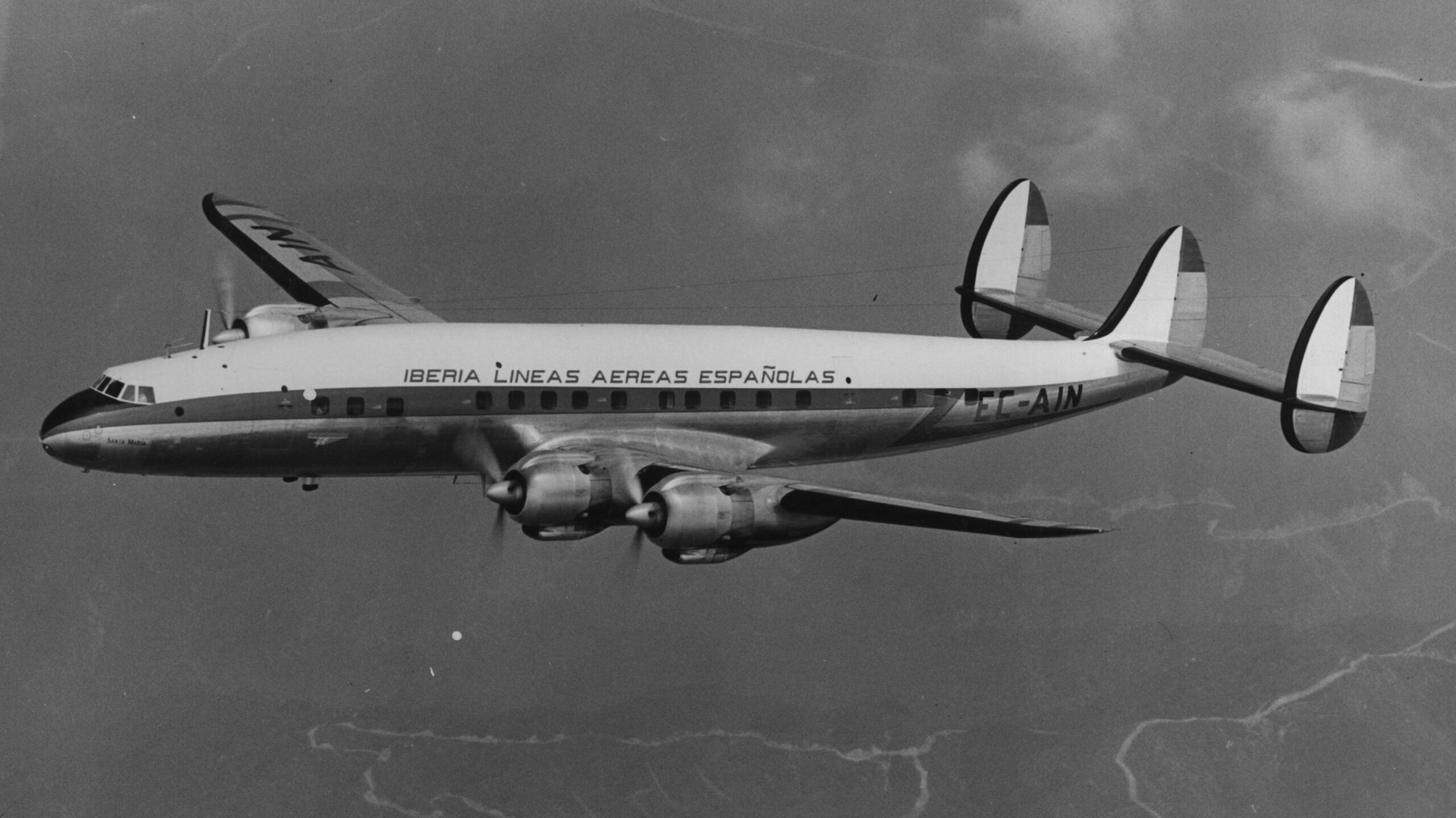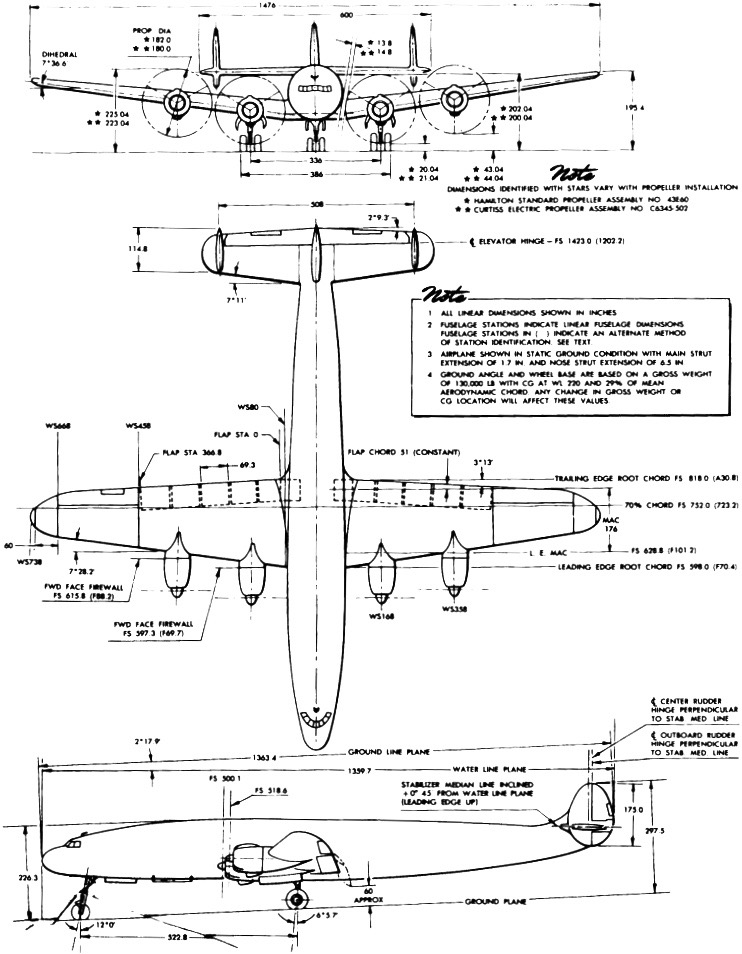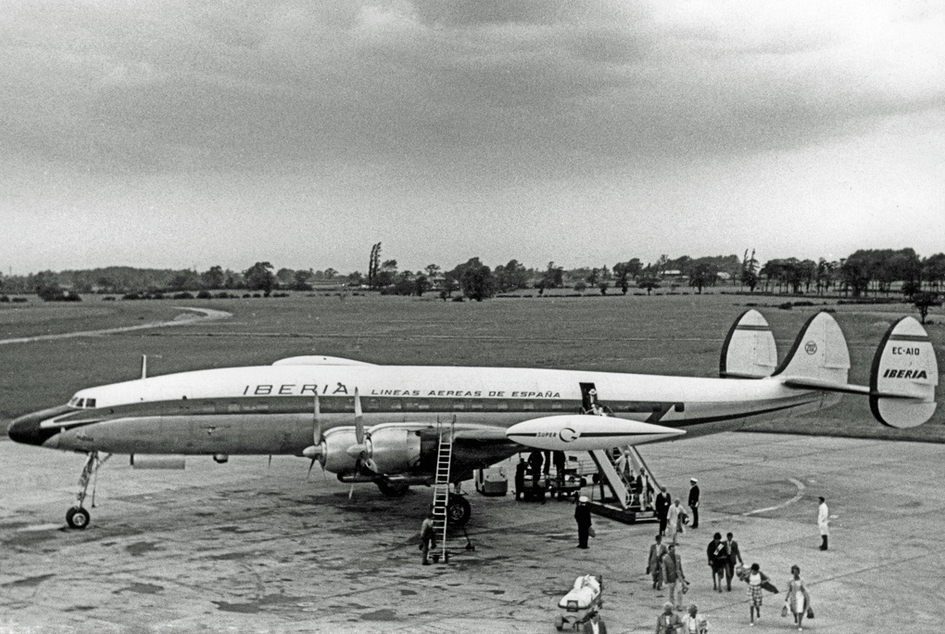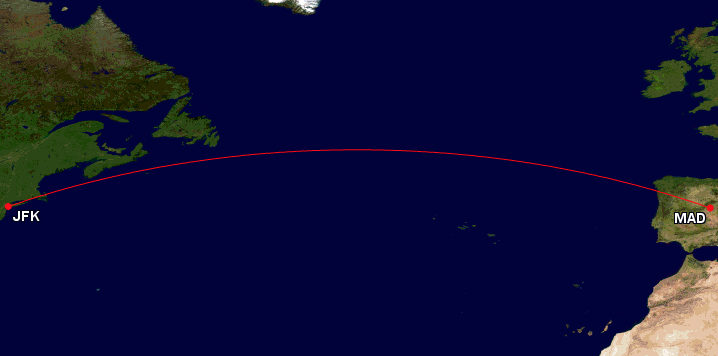
 27 November 1964: Cecilio Imaz Batida of Spain, flying a Lockheed L-1049E-55 Super Constellation, EC-AIO, set a Fédération Aéronautique Internationale (FAI) World Record for Speed Over a Commercial Airline Route from New York City, New York, United States of America, to Madrid, Spain. The average speed over the course was 610,90 kilometers per hour (379.596 miles per hour).¹
27 November 1964: Cecilio Imaz Batida of Spain, flying a Lockheed L-1049E-55 Super Constellation, EC-AIO, set a Fédération Aéronautique Internationale (FAI) World Record for Speed Over a Commercial Airline Route from New York City, New York, United States of America, to Madrid, Spain. The average speed over the course was 610,90 kilometers per hour (379.596 miles per hour).¹
The Lockheed L-1049E Super Constellation was an improved L-1049C with a strengthened fuselage and wings to accommodate a takeoff weight of up to 150,000 pounds (68,039 kilograms), anticipating retrofitting the airplane to turboprop engines. It was used primarily on long overwater routes. Only 23 of this model were sold before Lockheed changed production to the L-1049G variant.

The L-1049E was powered by four air-cooled, supercharged and fuel-injected 3,347.662-cubic-inch-displacement (54.858 liter) Wright Aeronautical Division Cyclone 18 972TC18DA1 two-row, 18-cylinder turbo-compound radial engines. The engine’s high-velocity exhaust gases drove three “blow down” turbines which were geared to the engine’s crankshaft. (Gear reduction is 6.52:1.) Energy that would otherwise be wasted added as much as 600 horsepower to each engine. The Turbo Compound used the same nose section, power section and rear section as the standard Cyclone 18CB. The 972TC18DA1 (R-3350-34) was rated at 2,600 horsepower at 2,600 r.p.m., and 3,250 hp at 2,900 r.p.m. for takeoff. It had a compression ratio of 6.7:1 and required 115/145-octane aviation gasoline. The Turbo Compound engine was 7 feet, 5.53 inches (2.274 meters) long, 4 feet, 8.59 inches (1.437 meters) in diameter, and weighed 3,581 pounds (1,624 kilograms). The engines turned three bladed propellers through a gear reduction ratio of 0.4375:1.
Iberia Líneas Aéreas de España purchased three L-1049Es. The first, EC-AIN (s/n 4550), was delivered to Iberia in June 1954. The other two were EC-AIO (4551) and EC-AIP (4552). EC-AIO was later converted to the L-1049G configuration. In 1964, it was converted to a freighter.

In 1967, EC-AIO was sold to International Aerodyne, Inc., of Miami, Florida, and re-registered N8023. This registration was cancelled 1 March 1968 when the airplane was exported to Panama, where it was operated by Rutas Aereas Panamenas SA, registered HP-475. In 1970 the Super Constellation was flown in Biafra Air Lift, based at São Tomé International Airport (TMS), off the western coast of Africa. It was impounded at Felix Hophouet Boigny International Airport (ABJ), Abidjan, Ivory Coast, in March 1970, and scrapped there in January 1971.
¹ FAI Record File Number 5065

© 2023 Bryan R. Swopes